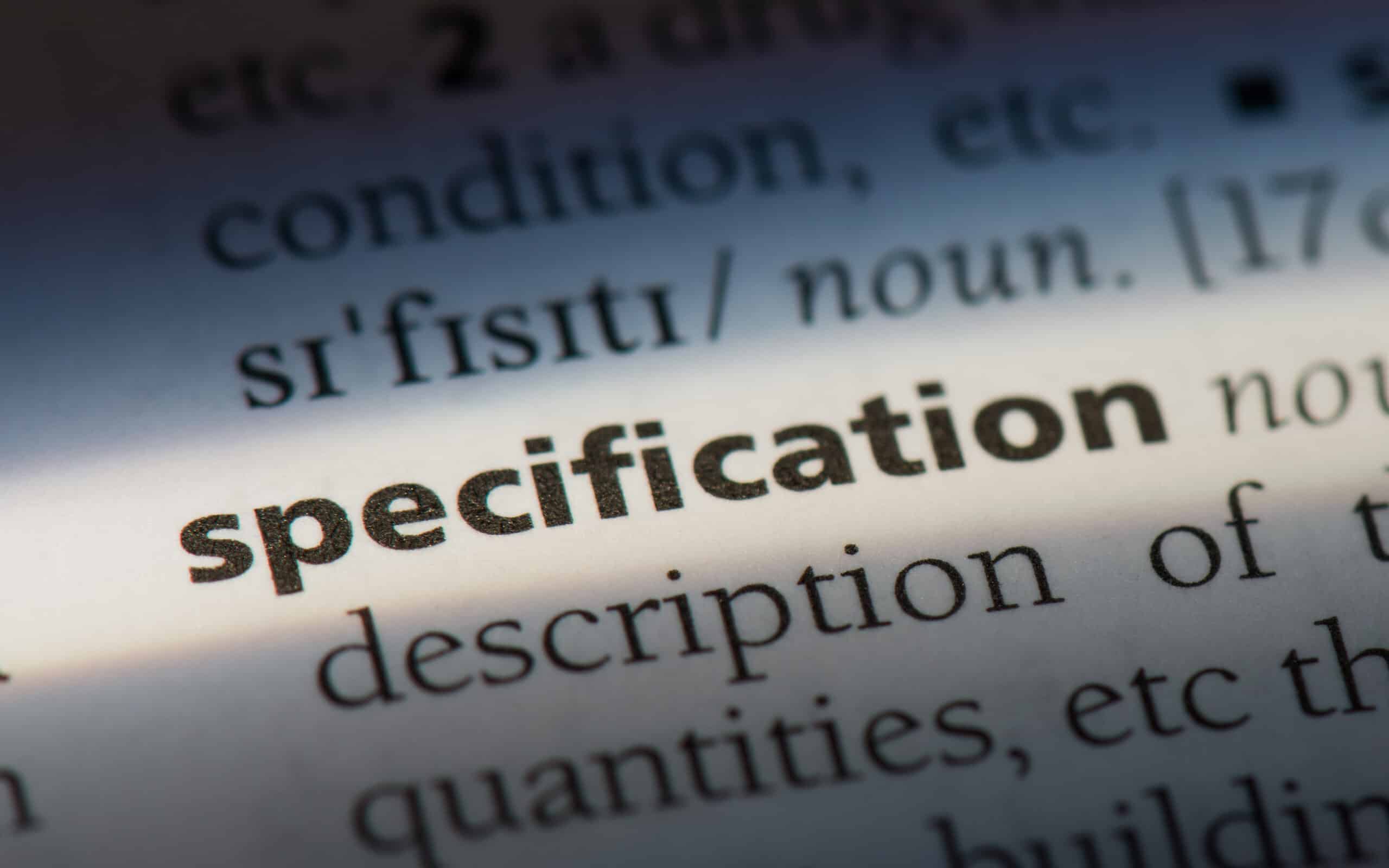
It is important that you clearly specify your expectations about a company process or product. These detailed expectations are called specifications and serve as a guide as to how well you are satisfying both internal and external expectations.
A specification (spec) is a detailed description of the requirements, characteristics, and features of a product, service, or system. It outlines the parameters and expectations for how the product, service, or system should function, perform, and behave under different conditions.
Specifications can cover a wide range of topics such as design, materials, dimensions, performance metrics, safety requirements, quality standards, and compliance regulations. They are often used as a blueprint or a reference document by designers, engineers, manufacturers, contractors, and other stakeholders to ensure that the final product or service meets the desired specifications and quality standards.
Overview: What is a specification?
It is common to refer to specifications when talking about process capability used in Lean Six SIgma. Process capability can be defined as the reconciliation between the Voice of the Process (as measured by control charts) and the Voice of the Customer (as measured by customer specifications).
To use specifications in process capability, you need to first determine the specifications for the product or service you are producing. You can then measure the output of the process and calculate the process capability index (Cpk) or process performance index (Ppk). If the Ppk is greater than 1.0, this indicates that the process is capable of meeting the specifications. If the process capability index is less than 1.0, this indicates that the process is not capable of meeting the specifications and may need to be improved.
Determining specifications involves identifying the requirements or criteria that a product or service must meet in order to be considered acceptable to the customer or end-user. Specifications can be based on a variety of factors, including functional requirements, performance requirements, safety requirements, regulatory requirements, and customer preferences.
Here are some steps you can follow to determine specifications:
- Identify the customer or end-user requirements: This involves understanding the needs and expectations of the customer or end-user for the product or service.
- Determine the functional requirements: These are the specific functions or tasks that the product or service must perform order to meet the customer’s needs.
- Identify the performance requirements: These are the specific performance characteristics that the product or service must meet in order to be considered acceptable.
- Determine the safety requirements: These are the requirements that ensure the product or service is safe to use and does not pose a risk to the user or others.
- Identify regulatory requirements: These are the requirements that are set by regulatory bodies, such as government agencies, to ensure that products or services meet certain standards or guidelines.
- Consider customer preferences: These are the features or characteristics that customers may prefer in a product or service, even if they are not essential to its function or performance.
An industry example of a specification
Here’s a possible example for the specifications of an Apple iPhone:
Functional Requirement:
The phone must allow the user to make phone calls, send text messages, and access the internet.
Performance Requirements:
- The phone must have a battery life of at least 10 hours under normal usage conditions.
- The phone must have a display resolution of at least 1080 x 1920 pixels.
- The phone must have a processor speed of at least 2.0 GHz.
Safety Requirements:
- The phone must meet all applicable safety standards and regulations, including those related to electromagnetic radiation and battery safety.
Regulatory Requirements:
- The phone must comply with all applicable regulations related to wireless communication, including FCC regulations in the United States and CE regulations in Europe.
Customer Preferences:
- The phone should have a screen size of at least 5 inches.
- The phone should have a minimum of 64GB of storage capacity.
- The phone should have a camera resolution of at least 12 megapixels.
By meeting these specifications, the smartphone manufacturer can ensure that their product meets the functional and performance requirements expected by their customers, complies with applicable safety and regulatory standards, and includes features that are preferred by their target market.
Frequently Asked Questions (FAQ) about specification
Here are some frequently asked questions about specifications:
Why are specifications important?
Specifications are important because they ensure that the final product, service, or system meets the desired quality, safety, and performance standards. They provide a clear set of requirements and expectations that everyone involved in the project can refer to and follow.
Who creates specifications?
Specifications can be created by a variety of people or organizations, depending on the project. For example, engineers, architects, designers, project managers, or regulatory agencies may create specifications.
What should be included in a specification?
A specification should include a clear description of the product, service, or system, including its purpose, requirements, features, and performance metrics. It should also include any relevant safety requirements, quality standards, and compliance regulations.
Can specifications change during a project?
Yes, specifications can change during a project, especially if new information or requirements arise. It is important to have a process in place for managing changes to the specification to ensure that everyone involved in the project is aware of the changes and understands how they will affect the final product, service, or system.